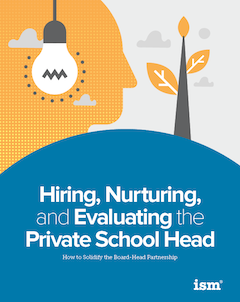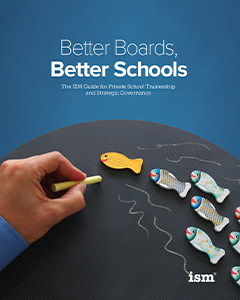|
Q. How has ISM’s guidance about fundraising changed over the years?
A. Successful development work has always been about building relationships between donors and your school and its mission — relationships that speak to the heart of your donors’ interests and values. So, while this core principle has not changed, ISM’s research about building a “culture of giving and getting involved,” as expressed in ISM’s recently released Stability Markers 6.0, calls for even more attention to be paid to your leadership donors and to building productive relationships, understanding that the nature of relationships has evolved as technology and the values of our donors have evolved.
Q. What’s the difference between fundraising, advancement, and development?
A. Advancement is the strategic process by which schools advance mission-appropriate constituent relations by integrating the school’s admission, development, and marketing/communications functions. Further, ISM defines development as “How schools identify, engage/cultivate, evaluate, solicit, recognize, and steward donors and prospects to establish and nurture relationships and to garner resources.” Consequent to the relationship-building that is central to this definition is fundraising. If your school is adept at building relationships with individual donors, then successful fundraising will follow.
Q. We host an annual golf tournament that our families seem to love. It brings in significant funds every spring and draws grandparents and community members into our school’s orbit. But it also requires a huge number of staff and volunteer hours. How can we determine if this fundraising event is worth the effort?
A. This is a great question — many schools wrestle with it. In our view, the chief reason for events such as these is to build relationships with the individuals who participate. Once relationships are built, quality fundraising will follow. The “friend-raising” purpose for these events is the central “why” behind having them. If that isn’t happening, the money realized will not be sustainable over time, and the event may not be worth the time and effort put into it.
|






